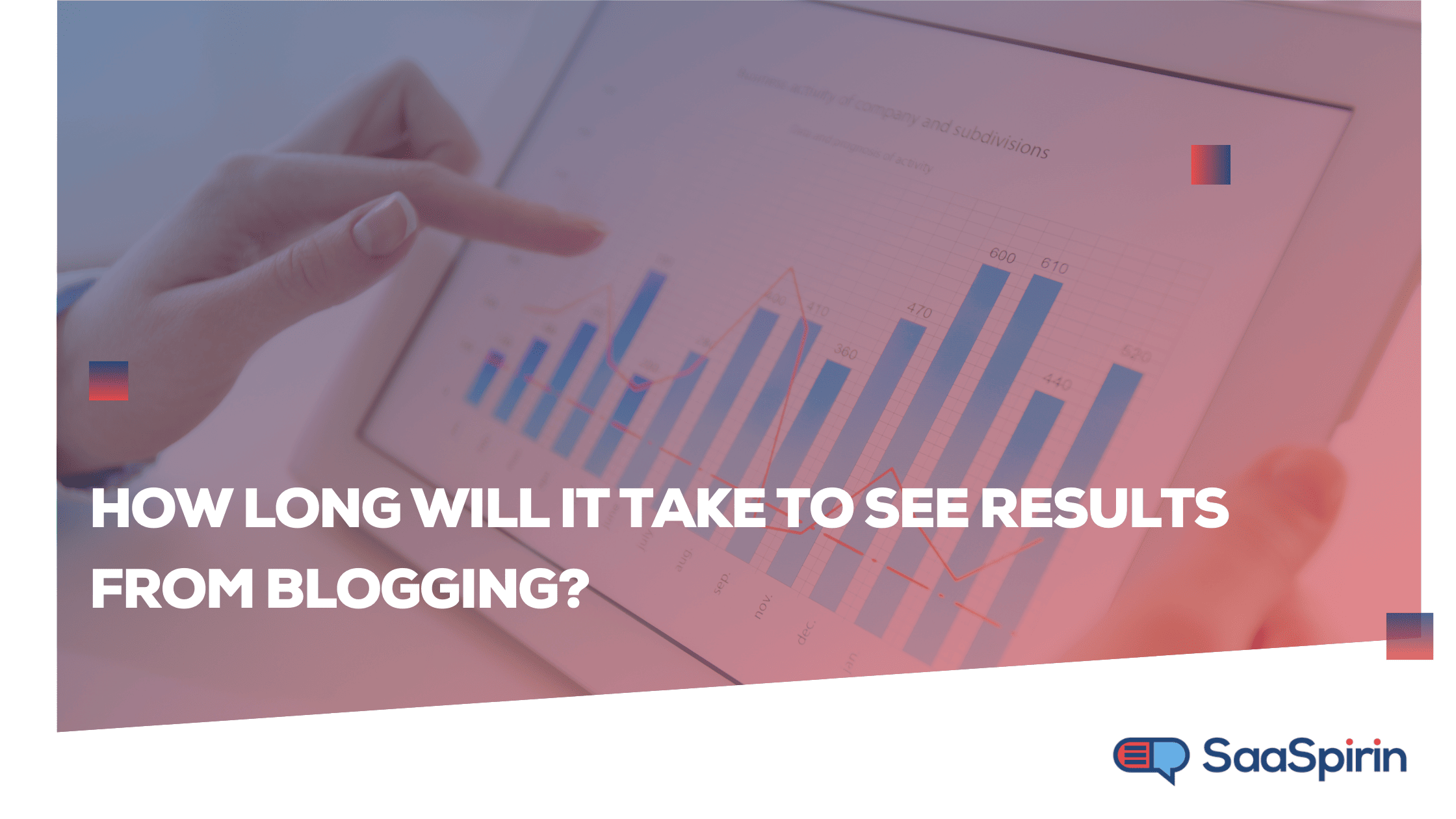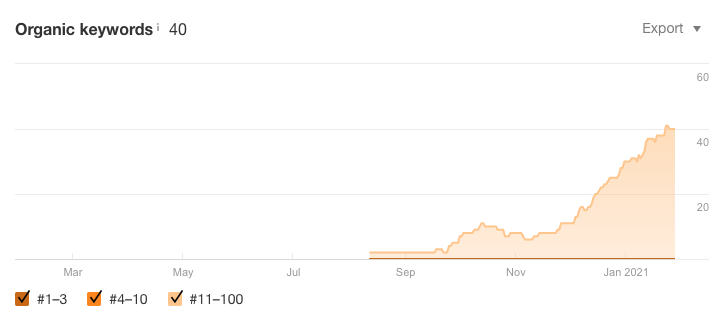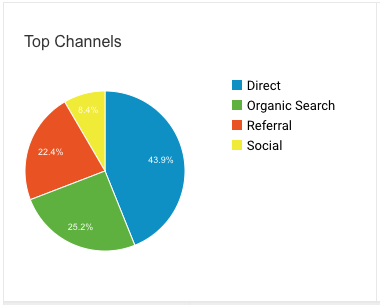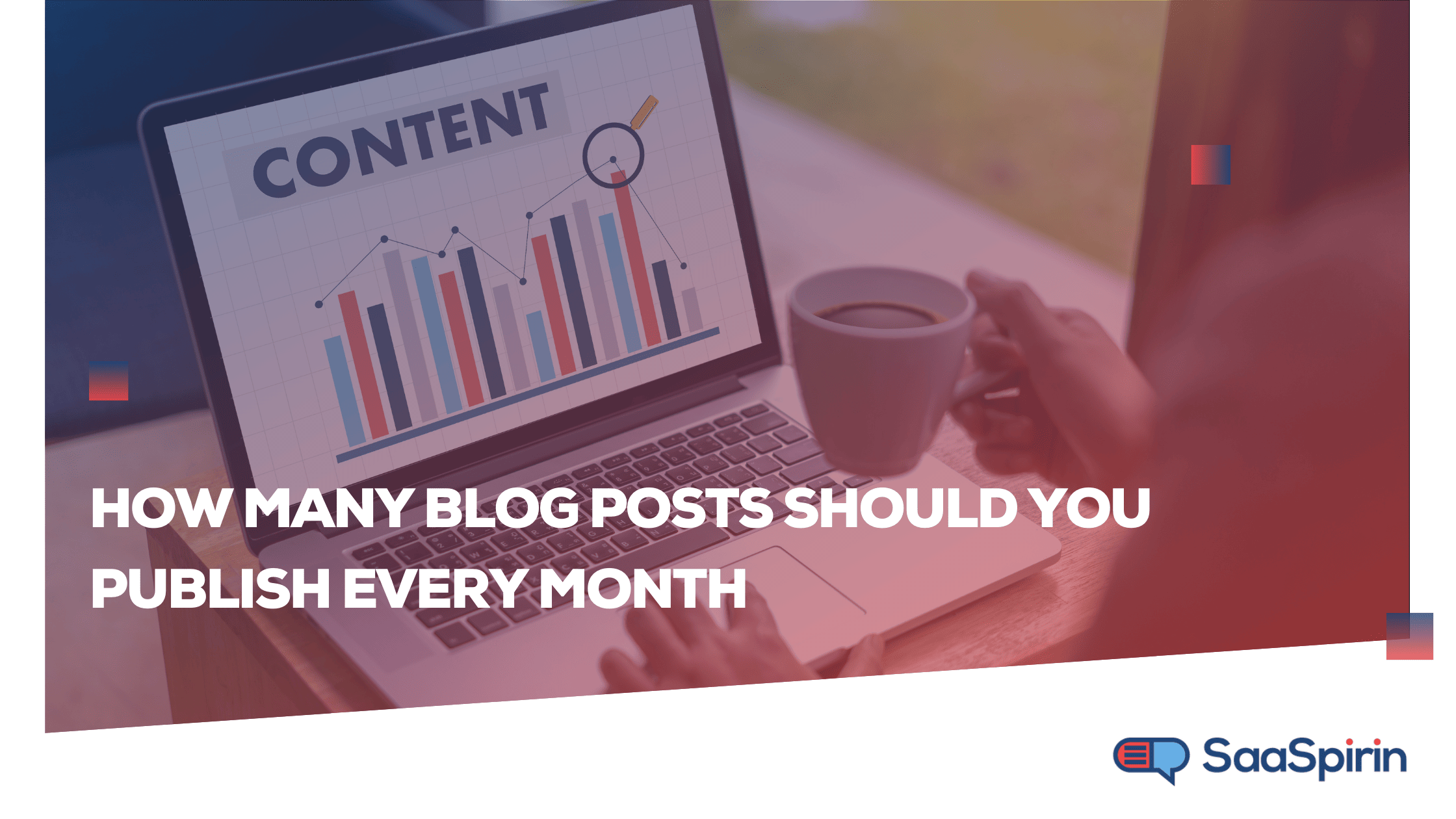How Long Will it Take to See Results from Blogging?
By Nicolas Jacobeus on July 29, 2021

For most SaaS businesses, an active blog is an essential marketing tool. It’s key to increasing your visibility, credibility, and brand affinity, which can give you substantial advantages over your competitors.
Despite all the reasons to start a blog, it can be a little frustrating waiting for the results to come.
The first year when you begin to invest in your blog, you might find yourself checking analytics every day. But most blogs don’t start to bring in organic search traffic right away. Here’s how to figure out how long you’ll need to wait before you start seeing real results from your blog.
Blogging is a long-term investment
Firstly, it’s important to remember that blogging is a long game. It’s extremely rare to see instant results. In most cases, you won’t start to see significant traffic to your blog for several months. Some say from three to six months, and others say 12-18 months.
Factors that affect the progress of your blog
What makes one SaaS blog bring in new customers after only a couple months and another take a year and a half? The answer can be found in a variety of elements, some within your control and some not. Getting a handle on which ones you're up against can help you evaluate your progress realistically.
Competition in your industry
The more saturated the content landscape in your industry, the longer it will take for your blog to gain traction. You can still find unique angles and keyword opportunities, but the reality is that it’s going to take you more time to climb up in search rankings.
For Enjuris, it took nearly a year to move from just under 1,000 pageviews per month to 5,000, with very little movement within the first six months. The blog was publishing nearly 30 pieces of content per month in a super competitive industry, with the full force of an SEO company behind it. But fast forward three years, and the site is now bringing in over 100,000 monthly pageviews from organic search, thanks to its strong foundation of optimized content and attention to building a unique brand. (You can see more data in our article on setting realistic blog goals.)
While this might be an extreme example, it shows that growth is rarely linear, and sticking with a solid content strategy over time is crucial—especially in your first year when it’s easy to get discouraged.
How much you publish
The more you put in, the more you’ll get out of your blog. If you only publish four short posts a month, it will take longer to grow traffic than if you publish eight longform posts, for example.
According to Traffic Generation Cafe, the more blog posts you have published, the better. The data says you can expect to see a 30% increase in traffic after publishing 24–51 posts. After 51 posts, that increase goes up to 77%.
The uniqueness of your content
When you’re publishing standard, run-of-the-mill content, it’s going to take longer to build momentum. But when your blog posts are unique and engaging, people are more likely to share and link to them, which can boost SEO effects.
When writing a blog post for Prospect.io about the best length for outreach emails, we considered how to differentiate the content from others ranking for the target keyword. It could have been a simple answer like all the others, but instead we dug deep into the studies others were quoting. We realized that people were misinterpreting the data. This springboarded into an answer that was profoundly more useful for the target audience.
And it shows in the keyword rankings. This post captured two keywords right away and continued to climb. After five months it had acquired 45 backlinks and rankings for 40 keywords.

Best of all, the keywords are highly relevant to the Prospect.io product, making this a post that’s likely to support growth of new users over time.
Your content promotion activities
Take into consideration your current reach, as this will impact how quickly you see the results you are after. Companies with an extensive social media following or established community around their brands have a leg up—they can easily spread the word about new posts.
Take for example the new SaaS startup ManyRequests. The founder, Robin Vander Heyden, told us that he started getting customers from search after only 1.5 months of publishing with us. Though his blog was new—he had only a couple of blog posts published before we started— there were some other factors working in his favor. Robin had established a strong following on social media in the form of a vibrant community of people interested in productized services. On top of that, the content landscape for his niche was still unsaturated.

His solid status in a growing industry helped fuel exposure, which brought quick, positive effects for SEO. (If you’re interested, we highly recommend joining the Productize Community.)
Your blog’s existing reputation
A new, unknown blog will need longer to see effects from blogging efforts than a well-known, established blog will. It’s much harder to work your way from 0 to 1,000 pageviews per month than to go from 5,000 to 10,000 and 20,000 to 50,000.
But over time, the effects of SEO will compound. This means that more established blogs can build on momentum and grow traffic numbers more quickly than one just starting out. It’s more likely that you’ll have a long period of very small ups and downs when starting out, but after time, your traffic will grow exponentially.
If your domain is newly published, you may have an additional disadvantage to consider: “the Google sandbox.” Some SEOs believe this is a feature of the Google algorithm designed to hold back new sites and blogs while Google vets them, for, say 3-6 months. (Note that this is not a factor if you just added a blog to your existing website.)
We feel the drawback of newness very keenly ourselves. SaaSpirin was built on an entirely new domain, leveraging only our founder’s relationships from past endeavors. We started with no social media presence nor brand equity for the SaaSpirin name. To boot, we’re also operating in an extremely competitive arena with a limited budget.
While mature blogs may see 80% or more of their traffic coming in from search engines, organic search is still a small component of how we get our traffic, 25%.

At this point in our growth story, we lean on our content to build trust with new leads we bring in via other channels. We know that as we write about the things our customers want to know, we are building credibility and other long-range benefits for our brand.
And as we continue to build our foundation on original, optimized content, we’ll eventually hit the point where our content starts to bring in more new leads passively, too.
Could this mean blogging is not a viable channel for you?
So, if your industry is really competitive and you have only a modest budget, does that mean you should give up on blogging?
Not at all. While it may take longer for organic search to become a major source of traffic for you, there’s no reason you can’t take advantage of other powerful benefits immediately. Your content should support your sales efforts from day one, for instance.
But building real authority takes consistency and time. Your blog and all the activities surrounding it work together to signal to Google and your users that you’re a credible source—and they need more evidence than a couple posts.
And once people start reading your blog, it takes some more time before they actually feel confident in trying your service. According to Demand Gen, 47% of people read three to five pieces of content before engaging further with the company.
It’s certainly worth checking in to make sure your blog is moving in the right direction, though.
Signs that your blog is on the right track
When it feels like you’re waiting a long time to see results from your blog, here are a few things you can check to make sure that you’re on the right track:
- You are receiving comments on your blog posts. If people are interested in your posts, it’s a sign your content will appeal to more readers in the future.
- You are focusing on highly relevant keywords. If you’re including keyword research in your SEO blog strategy, you’re probably on the right track.
- You are focusing on creating quality content. Most importantly, make sure you are making quality your main focus. Readers will quickly reject unoriginal, recycled content and move on.
Similar to when you were building your SaaS product, keep an eye out for product-market fit when it comes to your blog. See How to Measure Content Marketing Success When You’re Just Starting Out.
Blogging benefits are worth the wait
A blog can be a great marketing tool for any business. For a SaaS company, it can help to encourage readers to keep engaging with your business and can convince new users to take a leap of faith in your service. And while it may take several months to see organic traffic rolling in, it’s worth the wait.
Curious about how SaaSpirin can help get your blog on the path to success? Start a free trial today!
Read next:
You May Also Like
These Related Stories

Blog Goals - How to Set Realistic Growth Targets

What is SaaS Content Marketing?

